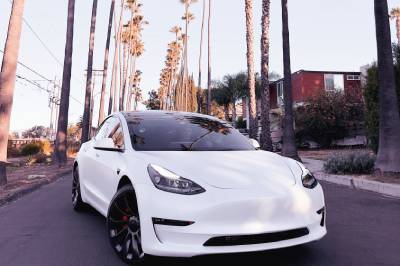[ad_1]
As the global automotive landscape shifts towards electric vehicles (EVs), there’s a mounting curiosity about their safety compared to conventional gasoline-powered vehicles. Safety has always been paramount in the automotive industry, but with the introduction of a new paradigm, there come new questions and considerations. Let’s delve into the matter and explore if electric vehicles are safer than traditional cars, especially when involved in collisions.
Understanding the Fundamental Differences
Before we compare safety records, it’s vital to understand the core differences between EVs and conventional vehicles:
- Power Source: Traditional cars use internal combustion engines powered by gasoline or diesel. Electric vehicles, on the other hand, operate using electric motors powered by batteries.
- Fuel Storage: While conventional cars store their fuel in tanks, EVs store energy in batteries, which can be spread throughout the vehicle, though they’re often located in the floor.
- Vehicle Weight: Batteries can be heavy, making some EVs heavier than their gasoline counterparts.
Structural Integrity and Design
- Battery Placement and Vehicle Stability: The placement of batteries in the floor of most EVs offers a lower center of gravity. This design reduces the risk of rollovers, which can be among the deadliest types of accidents.
- Frontal Crumple Zones: Traditional vehicles need to accommodate large engines in the front, which can impact the effectiveness of the crumple zone in a frontal collision. EVs often have an advantage here, with a “frunk” (front trunk) providing an added buffer.
- Fire Risk: There’s a perception that EVs are more prone to fires, especially in accidents. However, data suggests that gasoline vehicles are more likely to experience fires in crashes. While EV batteries can catch fire after a severe collision, these instances are rarer than gasoline fires, and often, they can take longer to start, giving occupants more time to exit the vehicle.

Safety Testing and Ratings
Several safety institutions, like the National Highway Traffic Safety Administration (NHTSA) and the Insurance Institute for Highway Safety (IIHS), conduct crash tests on vehicles. Historically, many EVs, including models from Tesla, Chevrolet, and Nissan, have performed exceptionally well in these tests, often earning top ratings.
Advanced Safety Features
Modern EVs often come with advanced safety technologies, partly due to the integration of sophisticated electronics for battery management and propulsion:
- Autonomous Emergency Braking (AEB): Many EVs are equipped with AEB systems that detect an impending collision and automatically apply the brakes if the driver doesn’t act in time.
- Lane Departure Warning and Lane Keeping Assist: These systems help prevent side and off-road collisions.
- Blind Spot Detection: This feature warns drivers of vehicles in their blind spot, reducing side-swipe accidents.
While many of these features are also available in high-end traditional cars, they’re more commonly standard in electric models due to the inherent integration of advanced electronics.
Potential Concerns with Electric Vehicles
- Battery Integrity after a Collision: While EVs have rigorous safety standards, a significant impact can damage the battery, potentially leading to a delayed fire or presenting challenges for first responders.
- Quiet Operation: The quietness of EVs can be a double-edged sword. Pedestrians might not always hear an approaching EV, potentially leading to accidents. However, many manufacturers and regulators are addressing this concern by adding artificial sounds at low speeds.
- High-Voltage Components: In the aftermath of a crash, the high-voltage components can pose risks if they’re exposed or damaged. However, EVs are designed with multiple safety cutoffs to reduce the threat of electrocution.
Environmental Safety: A Broader Perspective
While this article primarily focuses on collision safety, it’s worth noting the broader safety implications concerning the environment:
- Emissions: EVs produce zero tailpipe emissions. Reduced emissions mean cleaner air, leading to fewer health problems associated with air pollution.
- Reduced Oil Spills and Contamination: A move to electric transportation reduces the need for oil extraction, refining, and transportation, all of which carry environmental risks, including catastrophic oil spills.
Conclusion
The transition from traditional vehicles to electric is not just about innovation for efficiency’s sake; it’s also a quest to make roads safer. While both EVs and conventional cars have their unique safety challenges, current data and crash tests suggest that electric vehicles hold a slight edge in many safety categories, especially with advancements in design, technology, and battery management.
However, as with any vehicle, safety also significantly depends on the driver’s behavior, maintenance, and the external environment. As the electric vehicle market matures, we can anticipate even more rigorous safety measures and improvements, ensuring that roads become safer for everyone.
[ad_2]




